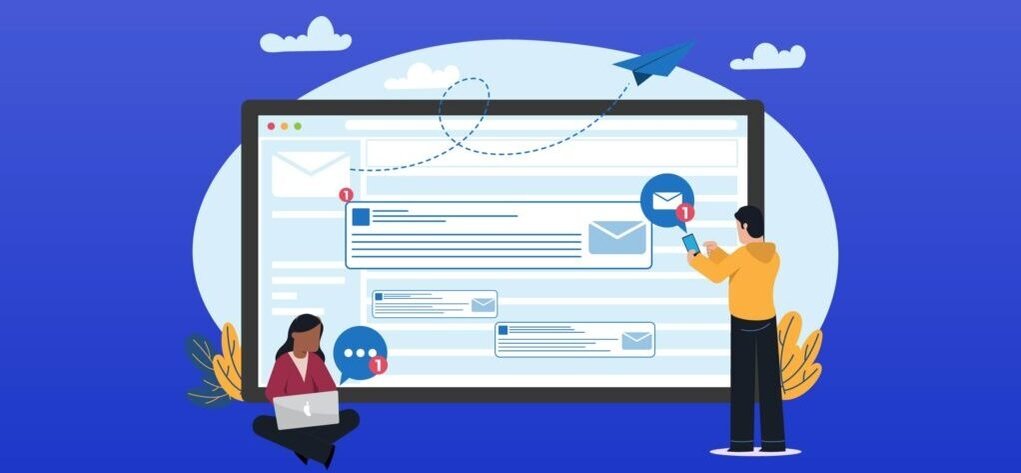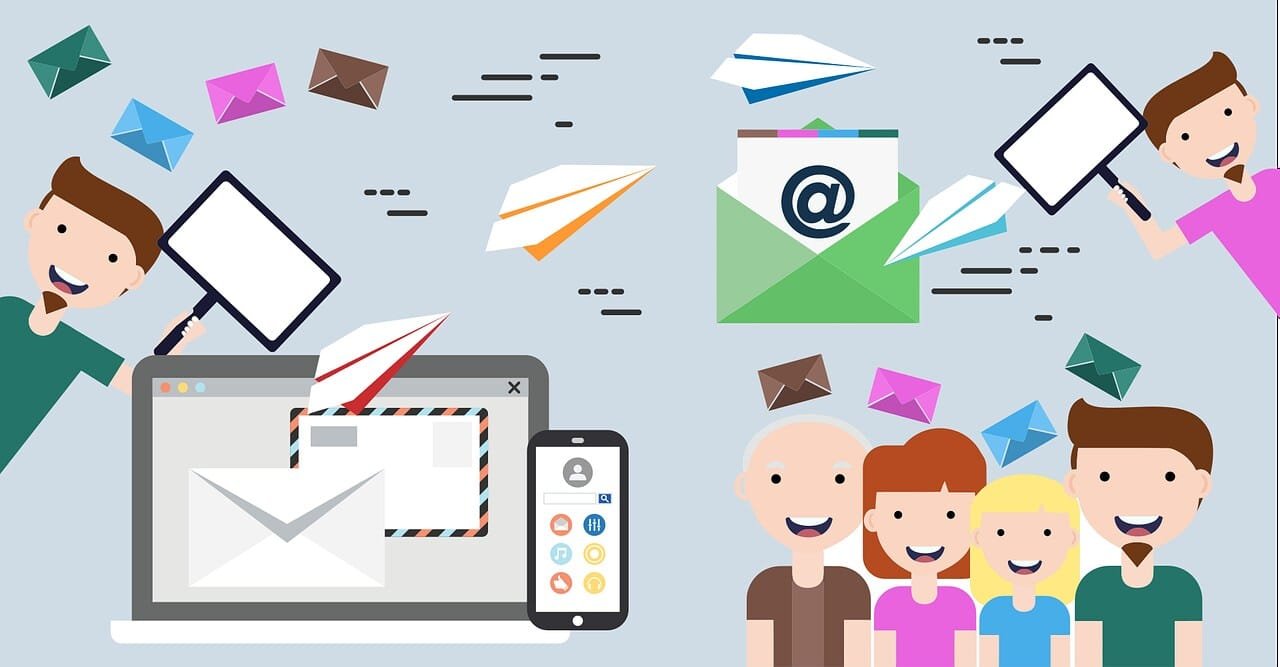Email marketing is one of the most powerful tools for connecting with your audience. With the right content, you can build relationships, drive sales, and create a loyal customer base. But how do you create engaging email marketing content that stands out in a crowded inbox? Let’s dive in and explore the secrets of crafting emails that your readers will love.
Understand Your Audience
Know Who You’re Talking To
The first step in creating engaging email content is understanding your audience. Who are they? What are their interests, pain points, and desires?
The more you know about your audience, the more you can tailor your content to meet their needs.
Start by segmenting your email list. This means dividing your subscribers into smaller groups based on their behavior, interests, or demographics. By doing this, you can send more personalized and relevant content to each group.
Listen to Their Feedback
Pay attention to the feedback from your audience. What do they like or dislike about your emails? You can gather this information through surveys, polls, or simply by monitoring your email analytics.
Look at open rates, click-through rates, and responses to see what’s working and what’s not.
Craft Compelling Subject Lines
Understand Your Audience’s Pain Points
Start by identifying the primary pain points or challenges your audience faces. Your subject line should address these directly, offering a solution or hinting at valuable insights within the email.
For instance, “Struggling with Customer Acquisition? Here’s a Proven Strategy.”
Use Curiosity and Intrigue
Curiosity is a powerful motivator. Create subject lines that pique curiosity without giving away too much. Pose a thought-provoking question or tease a surprising statistic to encourage opens.
For example, “Did You Know: The Secret to Doubling Conversions?”
Personalize Whenever Possible
Personalization goes beyond just using the recipient’s name. Leverage data about your subscribers to personalize subject lines based on their behavior, preferences, or past interactions with your brand.
Incorporating personalized elements like recent purchases or interests can significantly increase open rates.
Keep It Concise and Clear
Avoid lengthy subject lines that get cut off on mobile devices. Aim for clarity and brevity while conveying the value or benefit of opening the email.
Use actionable language that compels the reader to take immediate interest, such as “Unlock Your Free Marketing Audit Today.”
Test and Iterate
Never settle for the first subject line that comes to mind. A/B testing is essential for optimizing subject line performance. Test different approaches, tones, and formats to understand what resonates best with your audience.
Analyze open rates and adjust your strategy based on the results to continually improve engagement.
Avoid Clickbait Tactics
While it’s important to create curiosity, avoid misleading or clickbait subject lines. Your subject line should accurately reflect the content of the email and deliver on the promise made.
Building trust with your audience is crucial for long-term engagement and loyalty.
Incorporate Urgency and FOMO
Creating a sense of urgency can motivate recipients to open your email promptly. Use phrases like “Limited Time Offer” or “Ending Soon” to convey urgency.
Pairing this with a fear of missing out (FOMO) can further increase engagement, such as “Last Chance: Secure Your Spot Before It’s Gone!”
Align with Email Content
Ensure your subject line sets the right expectations for the email content. The subject line should be a natural extension of what the recipient will find inside, whether it’s valuable information, exclusive offers, or compelling storytelling.
This alignment improves the overall user experience and encourages higher engagement rates.
Write Engaging Email Copy
Start with a Strong Opening
Your opening line should grab the reader’s attention immediately. You can start with a question, a surprising fact, or a bold statement. The goal is to pique their interest and make them want to read more.
Keep It Conversational
Write as if you’re having a conversation with a friend. Use simple, everyday language and avoid jargon. This makes your content more relatable and easier to read.
Focus on the Benefits
Instead of just listing features, explain how your product or service can benefit the reader. How will it solve their problems or improve their life?
This approach makes your content more appealing and persuasive.
Tell a Story
People love stories. They’re engaging and memorable. Use storytelling to illustrate your points and connect with your audience on an emotional level.
Share customer success stories, behind-the-scenes insights, or personal anecdotes.
Be Clear and Concise
Keep your sentences and paragraphs short. This makes your email easier to read, especially on mobile devices.
Avoid unnecessary fluff and get straight to the point.
Include a Clear Call to Action
Every email should have a clear call to action (CTA).
What do you want the reader to do next? Whether it’s visiting your website, making a purchase, or downloading a resource, make sure your CTA is prominent and easy to follow.
Design Matters

When it comes to email marketing, the design of your emails plays a crucial role in capturing attention, conveying your message effectively, and driving engagement.
For startup founders looking to optimize their email design for maximum impact, here are some strategic considerations:
Create a Consistent Brand Identity
Consistency in branding helps build trust and recognition among your audience. Ensure that your emails reflect your brand’s visual identity through consistent use of colors, fonts, and imagery.
This reinforces brand recall and strengthens the connection with your subscribers.
Prioritize Mobile Responsiveness
With a growing number of users accessing emails on mobile devices, it’s essential that your email design is responsive. Test your emails across various devices and screen sizes to ensure they display properly and are easy to navigate.
A seamless mobile experience improves readability and engagement.
Use Visual Hierarchy
Guide your readers’ attention through effective visual hierarchy. Use headlines, subheadings, and clear sections to organize your content.
Place important information and calls to action (CTAs) strategically to ensure they stand out and are easily accessible.
Balance Text and Images
While images can enhance visual appeal, they should complement your message rather than overwhelm it. Use high-quality, relevant images sparingly to support your content.
Too many images can increase load times and distract from your key message. Focus on delivering value through concise, well-crafted copy that resonates with your audience.
Incorporate White Space
White space (or negative space) around elements in your email design helps create a clean, uncluttered look. It improves readability and allows your content to breathe, making it easier for readers to focus on the important information.
Don’t be afraid of empty space—it enhances the overall aesthetic and professionalism of your emails.
Implement Clear CTAs
Your call to action (CTA) should be clear, compelling, and prominently displayed. Use contrasting colors, bold fonts, or buttons to make your CTA stand out.
Clearly state what action you want the reader to take, whether it’s visiting a website, making a purchase, or downloading a resource. Make it easy for recipients to understand and act upon your message.
Test Across Platforms and Email Clients
Email design can render differently across various email clients and platforms. Test your emails across popular email clients (e.g., Gmail, Outlook, Apple Mail) to ensure consistent rendering and functionality.
This includes testing images, links, and responsiveness to guarantee a seamless experience for all recipients.
Leverage Interactive Elements
Incorporate interactive elements, such as accordions, carousels, or clickable buttons, to engage recipients and encourage interaction within the email itself.
Interactive emails can increase engagement rates and provide a more dynamic user experience. However, ensure that these elements enhance rather than distract from your message.
Use Personalization
Make It Personal
Personalization goes beyond just using the recipient’s name. It involves tailoring your content to their preferences, behaviors, and past interactions with your brand.
Use the data you have about your subscribers to make your emails more relevant and engaging.
Dynamic Content
Dynamic content allows you to show different content to different segments of your audience within the same email.
For instance, you can show product recommendations based on past purchases or content that aligns with their interests. This level of personalization makes your emails feel more bespoke and valuable.
Add Value with Content
Provide Useful Information
Your emails should offer value to your readers. This could be in the form of tips, tutorials, industry news, or exclusive content.
Think about what your audience cares about and provide content that educates, entertains, or solves a problem for them.
Offer Exclusive Deals
One of the main reasons people subscribe to email lists is to receive special offers and discounts. Reward your subscribers with exclusive deals that they can’t get anywhere else.
This not only encourages them to open your emails but also drives conversions.
Create Interactive Content
Interactive content, like quizzes, polls, or surveys, can boost engagement by encouraging readers to participate actively. This not only makes your emails more fun but also provides you with valuable insights into your audience’s preferences and behaviors.
Timing and Frequency
Find the Right Time
Timing can significantly impact your email open rates and engagement. Test different send times to see when your audience is most likely to open and interact with your emails.
This might vary depending on the demographics of your audience and their habits.
Balance Frequency
Finding the right frequency for your emails is crucial. Too many emails can overwhelm and annoy your subscribers, leading to higher unsubscribe rates. Too few, and your audience might forget about you.
Aim for a balance that keeps your audience engaged without overwhelming them. Monitor engagement metrics to find the sweet spot.
Build a Relationship
Consistent Branding
Consistency in your branding helps build trust and recognition. Use the same colors, fonts, and tone of voice in your emails as you do in other marketing materials.
This creates a cohesive brand experience and makes your emails instantly recognizable.
Be Genuine
Authenticity is key in building a relationship with your audience. Be honest and transparent in your communications. Share your brand story, your values, and what makes you unique.
People are more likely to engage with brands they feel a genuine connection to.
Encourage Replies
Encourage your readers to reply to your emails. This can be as simple as asking for their opinion on a topic or inviting them to share their experiences.
Responding to replies shows that you value their input and helps build a stronger relationship.
Strategies for Growing Your Email List
Encourage Sign-ups Everywhere
To create engaging email content, you first need a robust email list. Make it easy for people to subscribe by placing sign-up forms on high-traffic areas of your website, such as the homepage, blog, and landing pages.
Encourage sign-ups through your social media profiles and at in-person events. The more opportunities people have to subscribe, the larger your list will grow.
Offer Incentives
People are more likely to give you their email address if they get something valuable in return. Offer incentives such as free e-books, discount codes, or exclusive access to webinars or events.
Make sure the incentive is relevant to your audience and appealing enough to encourage sign-ups.
Use Pop-ups Wisely
Pop-ups can be an effective way to capture email addresses, but they need to be used wisely. Ensure your pop-ups are well-timed and offer value.
For instance, you can set pop-ups to appear when a user is about to leave your site or after they’ve spent a certain amount of time browsing. Avoid intrusive or overly frequent pop-ups, as they can frustrate visitors.
Creating a Welcome Series
Make a Great First Impression
Your welcome email is your chance to make a great first impression. It sets the tone for your future communications and provides an opportunity to introduce your brand.
Use this email to thank subscribers for joining, share what they can expect from your emails, and deliver any promised incentives.
Build a Connection
A welcome series, rather than a single welcome email, can help build a deeper connection with your new subscribers. Spread out your introduction over several emails.
In the first email, you might introduce your brand and thank them for subscribing. In subsequent emails, share more about your brand story, your values, and how your products or services can benefit them.
Provide Value Early
Early in your welcome series, provide value to your new subscribers. This could be through educational content, exclusive discounts, or helpful resources.
Showing value early helps build trust and encourages subscribers to stay engaged with your future emails.
Creating Compelling Content Themes
Monthly Newsletters
A monthly newsletter can keep your audience informed and engaged. Include a mix of company news, industry updates, and educational content.
Make sure each newsletter provides value and keeps your readers looking forward to the next one.
Themed Campaigns
Themed email campaigns can generate excitement and engagement. For example, you can create a series around a holiday, a product launch, or a special event.
Themes provide a cohesive structure to your emails and make them more interesting to your readers.
User-Generated Content
Incorporating user-generated content into your emails can build community and trust. Share customer testimonials, reviews, or user-submitted photos.
This not only adds authenticity to your emails but also encourages other customers to engage with your brand.
Leveraging Email Automation

Drip Campaigns
Drip campaigns are automated sets of emails sent based on specific triggers, such as signing up for a newsletter, abandoning a cart, or reaching a milestone.
These campaigns can nurture leads, onboard new customers, and re-engage inactive subscribers.
Behavioral Triggers
Behavioral triggers allow you to send emails based on a subscriber’s actions.
For example, you can send a follow-up email after a purchase with related product recommendations or an email with a special offer if a subscriber hasn’t engaged in a while. This level of personalization can significantly boost engagement and conversions.
Re-engagement Campaigns
Not all subscribers will stay active forever. Re-engagement campaigns aim to win back inactive subscribers. Send a series of emails with special offers, updates, or simply ask if they still want to stay on your list.
Re-engaging inactive subscribers can help you maintain a healthy and active email list.
Optimizing Email Deliverability
Maintain a Clean Email List
A clean email list is crucial for good deliverability. Regularly clean your list by removing inactive subscribers, invalid email addresses, and spam traps.
This improves your sender reputation and ensures your emails reach the inbox rather than the spam folder.
Use Double Opt-in
Double opt-in requires subscribers to confirm their email address after signing up. This verifies their interest and reduces the likelihood of fake or mistyped email addresses being added to your list.
It also helps prevent spam complaints and improves deliverability.
Avoid Spam Triggers
Certain words, symbols, or practices can trigger spam filters and harm your deliverability. Avoid using excessive punctuation, all caps, misleading subject lines, or spammy content.
Always provide value and relevance in your emails to maintain a good sender reputation.
Compliance with Email Regulations
Follow GDPR Guidelines
If you’re sending emails to subscribers in the European Union, ensure compliance with the General Data Protection Regulation (GDPR).
Obtain explicit consent from subscribers, provide clear opt-out options, and handle personal data responsibly.
CAN-SPAM Act Compliance
For emails sent within the United States, comply with the CAN-SPAM Act regulations. Include a valid physical postal address, provide a clear way to opt-out, and honor opt-out requests promptly.
Non-compliance can lead to penalties and damage your reputation.
Enhancing Email Security
Use SPF, DKIM, and DMARC
Implement SPF (Sender Policy Framework), DKIM (DomainKeys Identified Mail), and DMARC (Domain-based Message Authentication, Reporting, and Conformance) protocols to authenticate your emails.
These measures verify your identity as a sender and help prevent email spoofing and phishing attacks.
Monitor for Phishing Attempts
Be vigilant against phishing attempts that impersonate your brand. Educate your subscribers about identifying legitimate emails from your brand and report phishing attempts promptly to protect your reputation and maintain trust.
Harnessing the Power of Analytics
Utilize Advanced Segmentation
Go beyond basic demographics and behavioral data. Use advanced segmentation based on purchase history, browsing behavior, engagement frequency, and more granular criteria.
This allows you to send highly targeted and relevant content to different segments of your audience.
Predictive Analytics
Predictive analytics can help forecast future behavior based on past data. Use predictive models to anticipate customer preferences, predict churn risk, and personalize your emails with content and offers that are most likely to resonate.
Implementing Personalization at Scale
Dynamic Content Blocks
Incorporate dynamic content blocks within your emails to tailor sections of your email based on each subscriber’s preferences or behavior.
For example, showcase products related to past purchases or highlight content based on their browsing history.
Behavioral Trigger Emails
Set up automated emails triggered by specific actions or behaviors, such as abandoned carts, website visits, or milestone anniversaries.
These emails are highly relevant and timely, increasing the likelihood of engagement and conversion.
Leveraging User-generated Content (UGC)
Encourage User Participation
Invite your subscribers to contribute content, such as reviews, testimonials, or user-generated photos and videos.
Share this UGC in your emails to build social proof, foster community, and increase engagement.
Run UGC Campaigns
Create campaigns that encourage users to submit content, such as contests, challenges, or themed hashtags. Highlight the best submissions in your emails and reward participants to incentivize ongoing engagement.
Interactive Email Experiences

Interactive Elements
Experiment with interactive elements like polls, quizzes, sliders, or clickable carousels within your emails. These interactive features can increase engagement, provide valuable feedback, and make your emails more memorable.
AMP for Email
Consider using AMP (Accelerated Mobile Pages) for Email to create dynamic and interactive experiences directly within the inbox. AMP allows for real-time updates, forms, and other interactive elements that can significantly enhance user engagement.
Embracing Omnichannel Integration
Cohesive Customer Experience
Integrate your email marketing efforts with other channels such as social media, SMS, and your website. Maintain a consistent message and branding across all channels to provide a seamless and cohesive customer experience.
Cross-channel Retargeting
Use email engagement data to inform retargeting efforts on other channels. For example, retarget users who opened your email but didn’t convert with relevant ads on social media or display networks.
Continuous Learning and Adaptation
Stay Agile
The digital landscape is constantly evolving. Stay updated with industry trends, consumer behavior shifts, and technological advancements. Adapt your email marketing strategies accordingly to stay ahead of the curve.
Experiment and Iterate
Don’t be afraid to experiment with new ideas, formats, or tactics. Use A/B testing and analytics to measure performance and iterate on your strategies.
What works today may not work tomorrow, so continuous improvement is key.
Wrapping it up
Crafting engaging email marketing content requires a deep understanding of your audience, strategic personalization, and adherence to best practices in deliverability and compliance. By leveraging advanced segmentation, embracing interactivity, and integrating across channels, you can create emails that resonate with your subscribers and drive meaningful engagement.
Stay agile, continuously test and iterate, and keep up with evolving trends to ensure your email marketing remains effective and impactful. Start implementing these strategies today to maximize your email marketing efforts and achieve your business objectives.
Happy emailing!
READ NEXT:
- Proven Marketing Strategies for Home Inspectors
- How to Market Your Therapy Practice
- Effective Marketing Strategies for Plastic Surgeons
- Crazy and Wild Marketing Ideas to Capture Attention
- Compassionate Marketing Strategies for Funeral Homes






















Comments are closed.